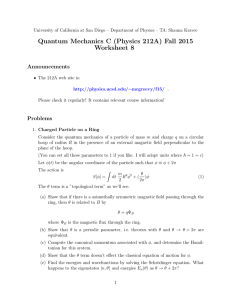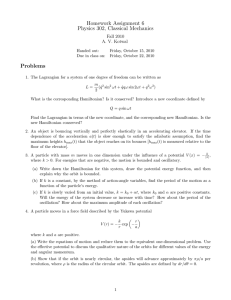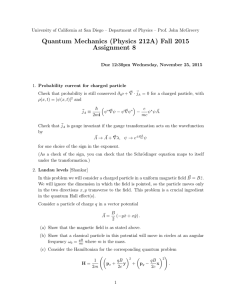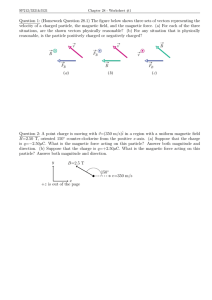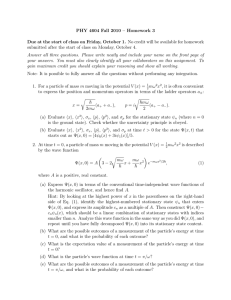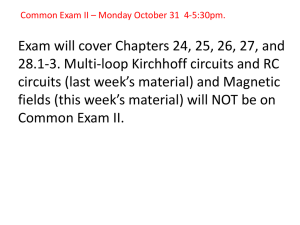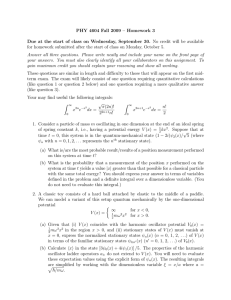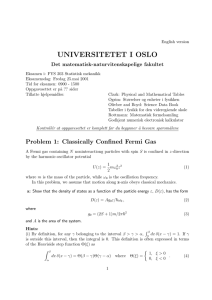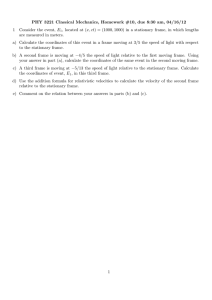PHY 6646 Spring 2002 – Homework 1
advertisement
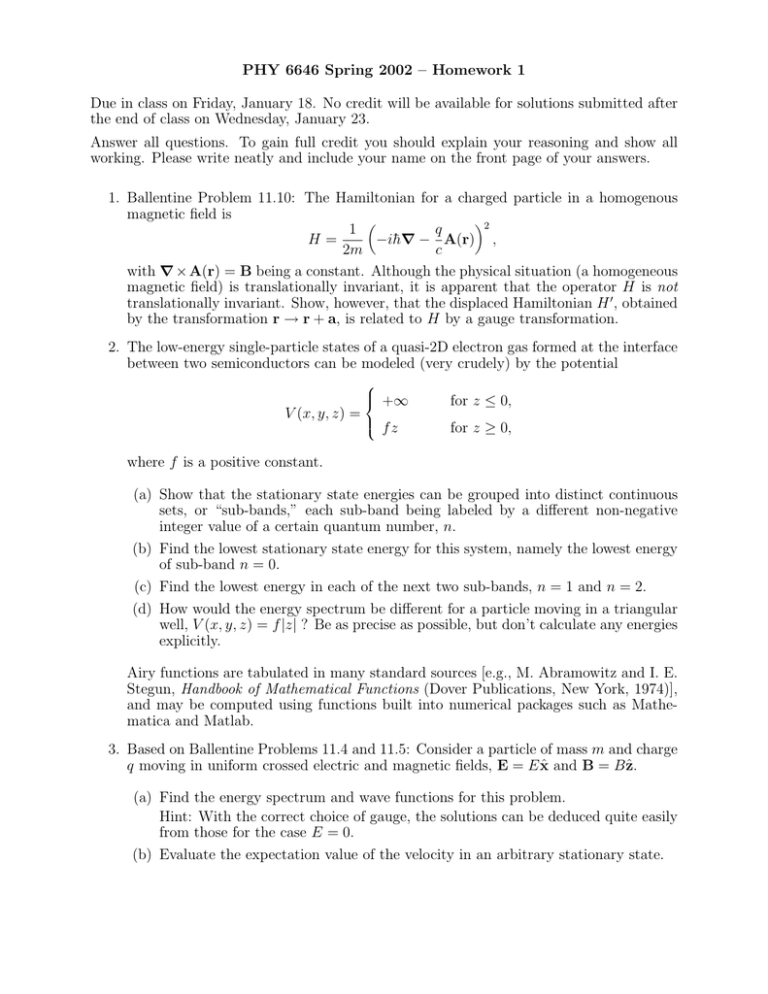
PHY 6646 Spring 2002 – Homework 1 Due in class on Friday, January 18. No credit will be available for solutions submitted after the end of class on Wednesday, January 23. Answer all questions. To gain full credit you should explain your reasoning and show all working. Please write neatly and include your name on the front page of your answers. 1. Ballentine Problem 11.10: The Hamiltonian for a charged particle in a homogenous magnetic field is 2 1 q H= −ih̄∇ − A(r) , 2m c with ∇ × A(r) = B being a constant. Although the physical situation (a homogeneous magnetic field) is translationally invariant, it is apparent that the operator H is not translationally invariant. Show, however, that the displaced Hamiltonian H 0 , obtained by the transformation r → r + a, is related to H by a gauge transformation. 2. The low-energy single-particle states of a quasi-2D electron gas formed at the interface between two semiconductors can be modeled (very crudely) by the potential V (x, y, z) = +∞ for z ≤ 0, fz for z ≥ 0, where f is a positive constant. (a) Show that the stationary state energies can be grouped into distinct continuous sets, or “sub-bands,” each sub-band being labeled by a different non-negative integer value of a certain quantum number, n. (b) Find the lowest stationary state energy for this system, namely the lowest energy of sub-band n = 0. (c) Find the lowest energy in each of the next two sub-bands, n = 1 and n = 2. (d) How would the energy spectrum be different for a particle moving in a triangular well, V (x, y, z) = f |z| ? Be as precise as possible, but don’t calculate any energies explicitly. Airy functions are tabulated in many standard sources [e.g., M. Abramowitz and I. E. Stegun, Handbook of Mathematical Functions (Dover Publications, New York, 1974)], and may be computed using functions built into numerical packages such as Mathematica and Matlab. 3. Based on Ballentine Problems 11.4 and 11.5: Consider a particle of mass m and charge q moving in uniform crossed electric and magnetic fields, E = E x̂ and B = Bẑ. (a) Find the energy spectrum and wave functions for this problem. Hint: With the correct choice of gauge, the solutions can be deduced quite easily from those for the case E = 0. (b) Evaluate the expectation value of the velocity in an arbitrary stationary state.

